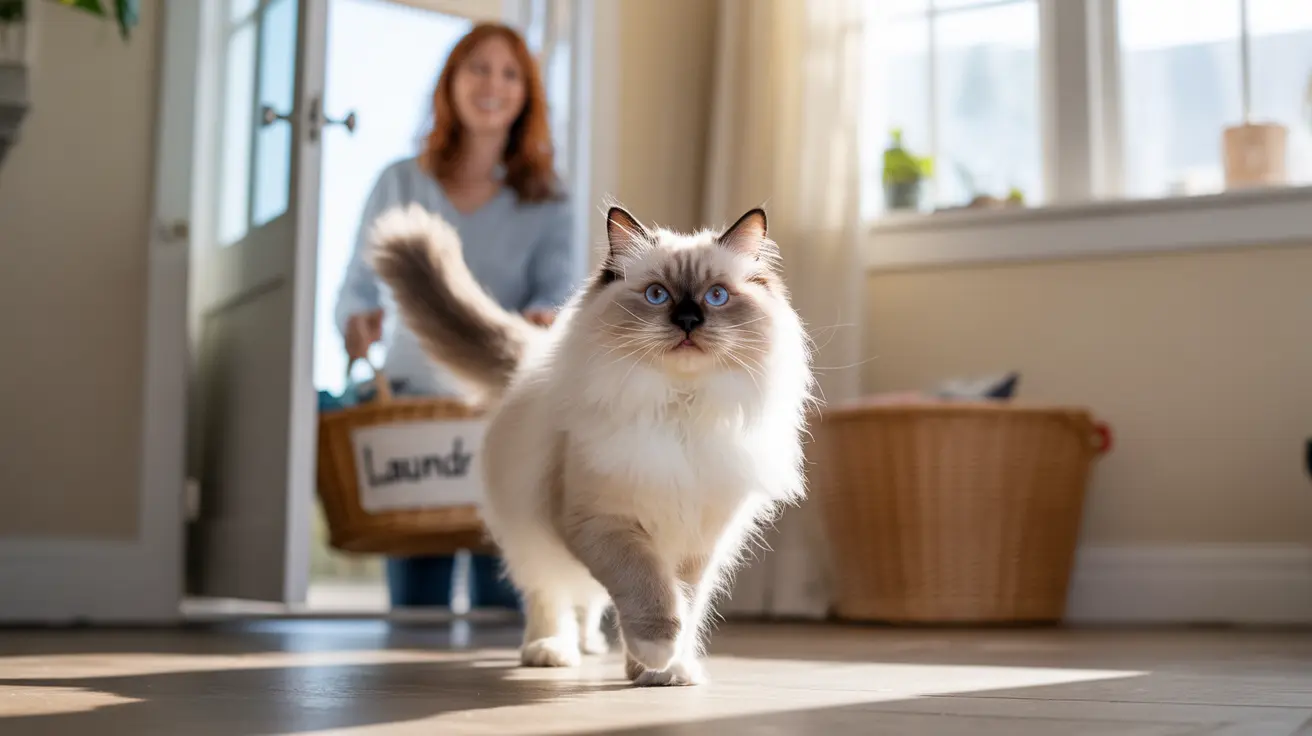What Exactly Is a Velcro Cat?
A velcro cat is characterized by their exceptionally strong attachment to their human companions. Just like the hook-and-loop fastener they're named after, these cats seem to "stick" to their owners, displaying an almost constant need for physical proximity and attention.
- Persistently following their owner from room to room
- Sleeping as close as possible to their human
- Excessive vocalization when seeking attention
- Demanding to be in the same space, even the bathroom
- Showing distress when separated from their owner
Why Do Cats Become Velcro Cats?
Several factors can contribute to the development of velcro cat behavior:
Breed Predisposition
Some cat breeds are naturally more prone to developing velcro tendencies. Siamese, Ragdoll, and Burmese cats are particularly known for their clingy and affectionate nature. These breeds have been selectively bred for companionship, resulting in more social and attached personalities.
Early Life Experiences
Cats who were separated from their mothers too early or experienced trauma during their developmental stages may develop stronger attachment needs. Additionally, extensive early socialization with humans can lead to more clingy behavior in adulthood.
Environmental Factors
Changes in the home environment, such as moving to a new house, the addition or loss of family members (human or pet), or alterations in daily routines can trigger velcro behavior. Some cats may become more clingy during times of stress or uncertainty.
Managing Your Velcro Cat's Behavior
While having an extremely affectionate cat can be wonderful, it's important to maintain healthy boundaries and prevent separation anxiety. Here are some effective management strategies:
Create an Enriching Environment
Provide plenty of entertainment options for your cat when you're not available:
- Interactive toys and puzzle feeders
- Cat trees and window perches
- Scratching posts in multiple locations
- Environmental enrichment like cat videos or bird feeders outside windows
Establish Healthy Routines
Consistent daily schedules help your cat feel secure and can reduce anxiety-driven clinginess. Set regular times for feeding, play, and attention, while gradually incorporating short periods of independence.
When to Be Concerned
While velcro behavior is often normal, sudden changes in your cat's attachment level could indicate underlying health issues. Monitor for these red flags:
- Excessive vocalization or distress when separated
- Destructive behavior when alone
- Changes in eating or litter box habits
- Signs of depression or anxiety
Frequently Asked Questions
What are the common signs that my cat is a Velcro cat?
Common signs include constant following, excessive vocalization for attention, insistence on physical contact, and distress when separated from you. Your cat may also sleep very close to you and demand attention during activities like working or cooking.
Why do some cats become clingy and follow their owners everywhere?
Cats may become clingy due to breed characteristics, early life experiences, environmental changes, or medical issues. Some cats simply have naturally affectionate personalities that lead to closer bonds with their owners.
Which cat breeds are more likely to exhibit Velcro or clingy behavior?
Siamese, Ragdoll, Burmese, and Persian cats are known for being more likely to exhibit velcro behavior. These breeds have been specifically bred for companionship and tend to form stronger bonds with their humans.
How can I help my Velcro cat become more independent and less anxious?
Encourage independence through environmental enrichment, establish consistent routines, provide interactive toys, and practice gradual separation training. Reward calm, independent behavior and avoid reinforcing attention-seeking behaviors.
When should I consult a vet or behaviorist about my cat's clinginess?
Consult a professional if your cat shows sudden changes in attachment level, displays destructive behavior, exhibits signs of severe separation anxiety, or if the clinginess significantly disrupts daily life for either you or your cat.
Embracing Your Special Bond
While managing a velcro cat requires patience and understanding, these deeply attached felines often provide uniquely rewarding relationships. By maintaining healthy boundaries while honoring their affectionate nature, you can enjoy a beautiful bond with your clingy companion while ensuring their emotional well-being.






